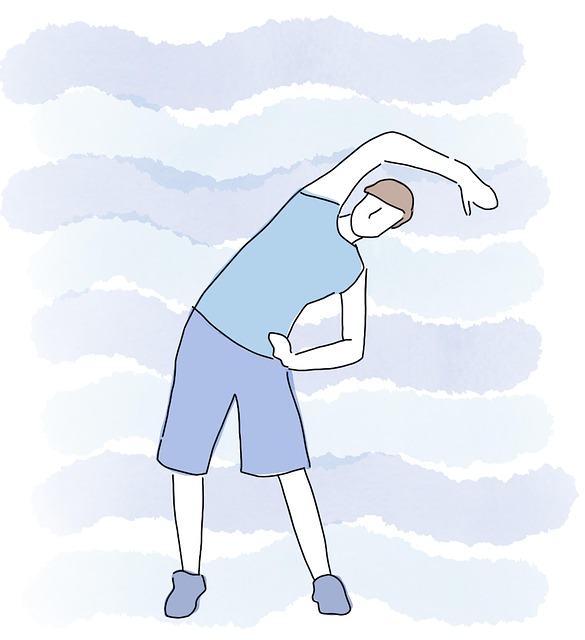Regenerative wellness guidance promotes holistic health by focusing on prevention and balance. It combines mindfulness, exercise, nutrition, stress management, and nature connection to restore mind-body harmony. Key practices include a balanced diet rich in nutrient-dense whole foods, minimizing inflammation, and engaging with nature for mental and physical benefits. Mindfulness and movement practices combat stress and fatigue, while building community connections fosters a sense of belonging and purpose, contributing to improved quality of life and resilience against disease.
Enhance your quality of life with regenerative practices—a holistic approach to wellbeing that empowers individuals to thrive. In this comprehensive guide, we explore various dimensions of regenerative wellness, including nature connection, diet and nutrition, mindfulness, movement, and community building. By understanding and integrating these practices, you can unlock substantial mental and physical health benefits, fostering a more balanced, energized, and connected life. Dive into our regenerative wellness guidance for transformative insights and actionable steps towards optimal regeneration.
- Understanding Regenerative Practices: A Holistic Approach to Wellbeing
- The Impact of Nature Connection on Mental and Physical Health
- Nourishing the Body: Diet and Nutrition for Optimal Regeneration
- Mindfulness and Movement: Unlocking Stress Relief and Energy Restoration
- Building Community: Social Connections for Lasting Wellness
Understanding Regenerative Practices: A Holistic Approach to Wellbeing

Regenerative practices offer a holistic approach to enhancing quality of life and overall wellbeing. This involves nurturing both the mind and body by focusing on restoration, renewal, and growth. Unlike traditional reactive healthcare, regenerative wellness guidance actively seeks to prevent illness and promote long-term health by addressing underlying causes rather than merely treating symptoms.
By integrating practices such as mindfulness, exercise, nutrition, and stress management, regenerative wellness fosters a sense of balance and harmony. This comprehensive approach recognizes the interconnectedness of physical, mental, and emotional well-being, ultimately leading to improved quality of life and greater resilience against disease and chronic conditions.
The Impact of Nature Connection on Mental and Physical Health

Nature connection, a key aspect of regenerative wellness guidance, has profound effects on both mental and physical health. Spending time in green spaces or simply looking at plants can reduce stress, lower blood pressure, and boost mood. This is partly due to the release of oxytocin, often referred to as the “love hormone,” which promotes feelings of calmness and bonding. Research also indicates that exposure to nature enhances cognitive function, improves attention span, and reduces symptoms of anxiety and depression.
Physically, connecting with nature encourages movement, whether it’s a walk in the park or gardening. This activity contributes to better cardiovascular health, strengthens muscles, and improves balance. Moreover, natural environments provide a respite from the constant stimulation of modern life, allowing for mental restoration and improved overall well-being. Incorporating regenerative practices that emphasize nature connection can thus be a powerful tool in enhancing quality of life.
Nourishing the Body: Diet and Nutrition for Optimal Regeneration

Nourishing our bodies with a balanced and regenerative diet is a cornerstone of holistic regenerative wellness guidance. This involves fueling our cells with nutrient-dense foods that support cellular repair and regeneration. Incorporating plenty of fresh fruits, vegetables, whole grains, lean proteins, and healthy fats creates a foundation for optimal bodily function. By prioritizing whole, unprocessed foods, we provide the essential vitamins, minerals, and antioxidants necessary for effective tissue repair and overall wellness.
A key aspect of dietary regenerative practices involves reducing chronic inflammation, which can impede regeneration. This means minimizing intake of processed sugars, refined carbohydrates, and unhealthy fats, commonly found in packaged goods. Instead, opt for anti-inflammatory foods like turmeric, ginger, berries, nuts, and fatty fish known for their restorative properties. These dietary choices not only support the body’s natural healing processes but also foster a sense of vitality and improved quality of life.
Mindfulness and Movement: Unlocking Stress Relief and Energy Restoration

In today’s fast-paced world, stress and chronic fatigue have become common issues affecting many individuals’ quality of life. However, incorporating mindfulness and movement practices can offer a powerful solution for regenerative wellness guidance. These activities serve as effective tools to unlock stress relief and promote energy restoration.
Mindfulness involves focusing on the present moment without judgment, allowing individuals to cultivate a deeper connection with their bodies and minds. Combined with movement exercises like yoga or gentle stretching, it helps release built-up tension and revitalizes the body’s natural energy flow. Such practices not only enhance physical well-being but also foster mental clarity and emotional balance, contributing significantly to an improved overall quality of life.
Building Community: Social Connections for Lasting Wellness

Building strong community connections is a vital component of regenerative wellness guidance, fostering a sense of belonging and purpose. In today’s fast-paced world, many individuals struggle with feelings of isolation and disconnection. Regenerative practices recognize the power of social relationships in enhancing overall well-being. By creating opportunities for meaningful interactions, communities can become powerful networks that support individual growth and resilience.
Encouraging residents to participate in local events, join community groups, or volunteer allows for intergenerational bonding and fosters a collective sense of responsibility. These connections can lead to improved mental health, increased social support, and a deeper sense of purpose. When individuals feel valued and connected, they are better equipped to navigate life’s challenges, contributing to a more resilient and thriving community overall.
Regenerative practices offer a holistic approach to enhancing quality of life, addressing mental and physical health, diet, mindfulness, movement, and community connections. By embracing these practices, individuals can unlock profound wellbeing, fostering resilience and vitality. This comprehensive guide provides essential regenerative wellness guidance for navigating a busy world and cultivating a fulfilling, balanced life.
